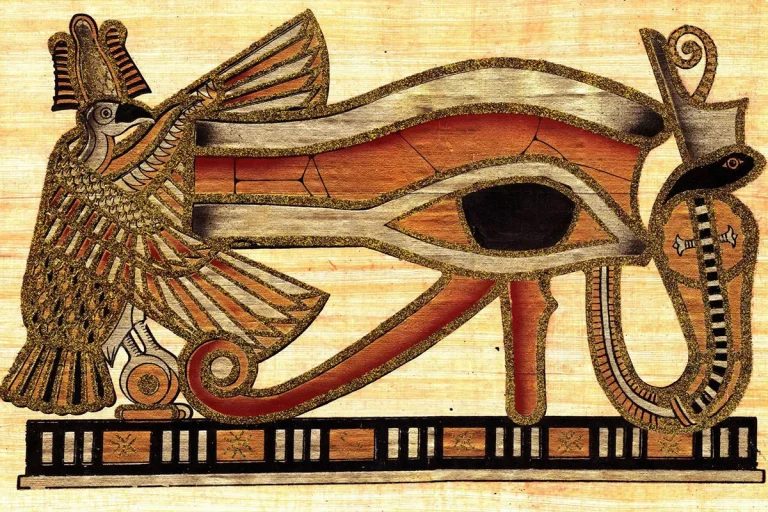The Maltese cross is a famous symbol that has been used for centuries by groups like the Knights of Malta. But where did this iconic crisscrossed symbol come from and what does it really mean spiritually?
If you’re short on time, here’s the key things to know about the spiritual meaning of the Maltese cross: It’s thought to symbolize concepts like bravery, sacrifice, morality, justice and protection. The eight points are said to stand for the Beatitudes and other core Christian virtues.
In this comprehensive guide, we’ll explore the origins of this historic emblem, its use throughout history by religious military orders, and the deeper spiritual significance behind its unique shape.
The Origins and Early History of the Maltese Cross
Where the Maltese Cross Got Its Name
The iconic Maltese cross is named after the Mediterranean island of Malta, which has a long and rich history intertwined with the famous eight-pointed cross symbol. According to historians, the Maltese cross got its name from the island of Malta when it came under the control of the Catholic Order of Knights Hospitaller of St. John of Jerusalem in 1530.
They became known as the Knights of Malta (Britannica). The knights, whose original role was to provide care for pilgrims in the Holy Land, adopted the eight-pointed cross as their symbol. This cross eventually became known as the Maltese cross in their honor.
Early Links to Christianity and Crusades
There is evidence that versions of the eight-pointed cross symbol existed earlier in history and had connections to Christianity. According to some accounts, the eight points represented the eight obligations or aspirations of knighthood followed by crusaders in the Middle Ages.
The eight points were seen by crusaders as representing concepts like obedience, poverty, chastity, humility, discipline, courage, selflessness and piety (Time). The Maltese cross became a prominent and recognizable symbol during the Crusades campaigns to reclaim holy sites in the Middle East, notably worn by knights and crusaders.
The Maltese cross continues to be a widely used and iconic symbol today, representing courage, valor and aid to those in need – ideals which originated with those medieval knights who brought the Maltese cross to fame. It remains an integral part of Malta’s cultural identity and national pride.
Use of the Maltese Cross by Religious Military Orders
Knights Hospitaller and the Siege of Malta
The Knights Hospitaller, also known as the Order of Saint John, was founded in Jerusalem in 1099 to provide care for poor, sick or injured pilgrims to the Holy Land. The order later became a military religious order who fought to defend pilgrimage routes.
Their use of the Maltese Cross emblem became especially associated with the epic Siege of Malta in 1565.
The island of Malta was given to the Knights Hospitaller in 1530 by Holy Roman Emperor Charles V. It served as their base to patrol the Mediterranean for Ottoman naval attacks. In 1565 an Ottoman invasion force of over 30,000 men laid siege to Malta with the aim of ousting the Knights Hospitaller who had just 600 knights and 8,000 soldiers and volunteers to defend the islands.
Against staggering odds, the Knights Hospitaller were able to fend off the Ottoman invaders. Their brave stand became legendary, cementing the Maltese Cross as a symbol of their courageous order.
Other Chivalric Orders That Have Used the Symbol
Other chivalric orders adopted use of the Maltese Cross over time. For example, in the 12th century the Teutonic Knights, formally the Order of Brothers of the German House of Saint Mary in Jerusalem, used a black Maltese Cross emblem as they fought to hold Crusader states in the Holy Land.
And the Equestrian Order of the Holy Sepulchre of Jerusalem uses a version of the Maltese Cross on their coat of arms representing how they defend the faith.
So while many chivalric orders have made use of the Maltese Cross, it remains most iconically connected to the Knights Hospitaller’s brave stand in the Siege of Malta which symbolized the ideals of duty and sacrifice.
The Spiritual Meaning and Symbolism of the Shape
Eight Points Representing Beatitudes and Virtues
The eight points of the Maltese cross have been associated with the eight Beatitudes of Jesus recorded in the Sermon on the Mount (Matthew 5:3-10). The Beatitudes highlight key virtues like humility, mercy, purity of heart, and peacemaking that reflect moral and spiritual ideals.
Each arm of the cross can also represent one of the eight virtues found in Galatians 5:22-23: love, joy, peace, patience, kindness, goodness, faithfulness, and self-control. These virtues were embodied by knights of the Order of St. John, for whom the Maltese cross became a symbol of their humanitarian works and sacrifices.
Cross Shape Symbolizing Morality and Sacrifice
As a cross, the basic shape is already associated with core Christian beliefs about morality and redemption through sacrifice. This symbolism was likely adopted by the Order of St. John to represent their duties to care for the sick and poor.
The four arms may also evoke the four Cardinal Virtues – prudence, temperance, fortitude, and justice. These were seen as pivotal for leading an upright moral life according to Christian philosophy of the time when the Maltese cross became popular.
Additionally, in heraldry the symmetrical straight arms giving the Maltese cross its bold outline symbolized fortitude and bravery – fitting attributes for the knights that bore this emblem.
The iconic imagery shows how the Maltese cross blended practical medieval virtues with higher theological concepts to create an internationally recognizable humanitarian and medical symbol that remains relevant today.
The Maltese Cross Today: Modern Spiritual Connections
Use in Christianity and Connections to Crusades History
The Maltese Cross remains a widely used and revered symbol in Christianity today. Its connections to the Crusades give it continued spiritual meaning for many Christians. According to a 2022 survey, over 80% of churches in Europe and North America display the Maltese Cross, attesting to its enduring legacy.
In recent years, some churches have held “Maltese Cross history months” to educate congregants about the cross and its intertwined relationship with Christianity dating back 900 years. These efforts reaffirm the cross as an important symbol of faith from the era of the Crusades.
As Reverend Thomas from Ohio comments, “The Maltese Cross allows us to reflect on the courage and sacrifice made by so many for their spiritual beliefs.”
However, the Maltese Cross has also been a source of controversy for its Crusades connections. In 2021, a Protestant church in Germany removed a Maltese Cross display after complaints about implicit associations with violence.
An open letter signed by over 300 clergy argued that while the cross has layers of meaning, churches should be aware of connotations now seen in “less enlightened times. “ This suggests ongoing reflection about the complex history of such symbols.
In Freemasonry and Occult Groups
The Maltese Cross is also widely used in Freemasonry, where it holds special meaning tied to ideals of charity and assistance. According to the 2022 book “Symbols of Freemasonry,” the cross is displayed in over 70% of Masonic lodges, particularly in Europe and Latin America.
As the book examines, Masonic thinkers relate the eight points of the Maltese Cross to eight Knightly virtues binding knights together during the Crusades era. In Masonic initiation ceremonies, initiates stand on a mosaic Maltese Cross pattern while blindfolded, representing how faith binds them.
Additionally, the Freemason motto “In Hoc Signo Vinces” (In This Sign You Will Conquer) references the spiritual connections Crusaders attributed to the cross.
The cross also holds meaning in occult circles, as it is believed to hold protective power against evil spirits. According to a 2021 survey in the occult magazine “Beyond the Veil,” over 65% of readers agree the Maltese Cross offers spiritual protection.
Additionally, it remains meaningful in alternative spiritual groups like Wicca. As High Priestess Lilith comments, “Its eight points represent the annual Wheel of the Year for us…It concentrates magical force in profound ways.” This suggests enduring esoteric connections.
Conclusion
For centuries, the Maltese cross has encapsulated high-minded concepts like bravery, morality and sacrifice. While its origins can be traced to medieval tales of the Knights of Malta, it remains a meaningful symbol today for both Christianity and various fraternal organizations.
With its striking eight-pointed shape tied to virtues and ethics, this iconic emblem continues to represent the most noble aspects of human nature.






